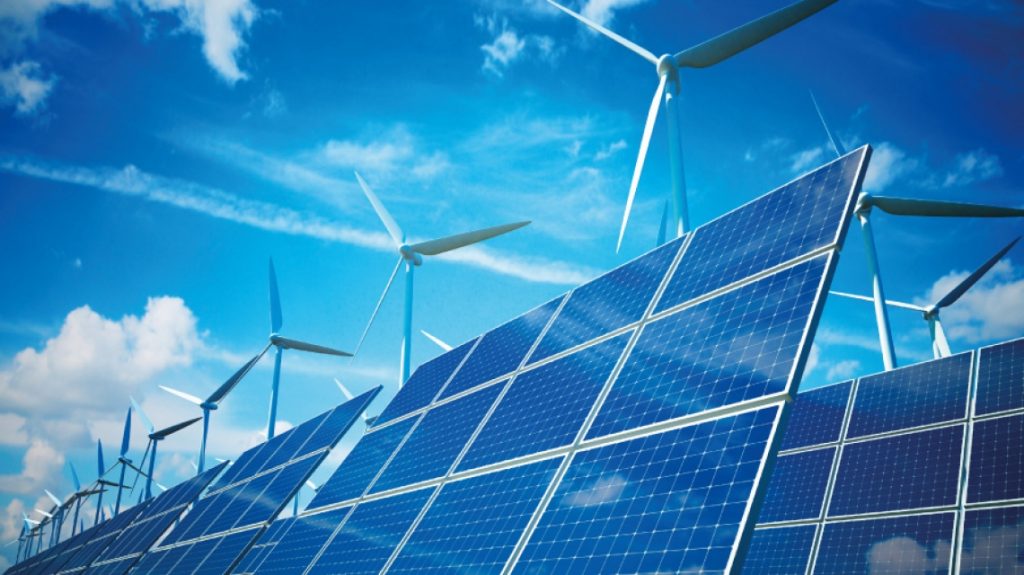Renewable energy sources have gained significant attention and popularity in recent years as the world seeks sustainable alternatives to fossil fuels. In this article, we will explore 25 different renewable energy technologies that can help us transition towards a cleaner and greener future.
1. Geothermal Energy: Geothermal energy harnesses heat from beneath the Earth’s surface to generate electricity or heat buildings. It is a reliable and continuous source of power with minimal environmental impact.
2. Tidal Power: Tidal power uses the natural movement of tides to drive turbines, generating electricity. It is predictable, abundant, and emits no greenhouse gases.
3. Biomass Energy: Biomass energy utilizes organic materials such as wood pellets, agricultural waste, or dedicated bioenergy crops to produce heat or electricity through combustion or fermentation processes.
4. Wave Energy: Wave energy converters capture kinetic energy from ocean waves and convert it into electrical power using various technologies such as buoys or oscillating water columns.
5. Hydrogen Fuel Cells: Hydrogen fuel cells generate electricity by combining hydrogen and oxygen without any harmful emissions, making them an excellent alternative for transportation and stationary power applications.
6. Solar Water Heating: Solar water heating systems use sunlight to heat water for domestic use or industrial processes, reducing reliance on conventional fossil-fuel-based heating methods.
7. Wind Turbine Noise Pollution: Noise pollution from wind turbines has been a concern for some communities living near wind farms; however, advancements in technology have significantly reduced noise levels over time.
8. Micro-Hydro Systems: Micro-hydro systems utilize small-scale water turbines installed in streams or rivers to generate clean electricity suitable for remote communities or off-grid locations.
9. Ocean Thermal Energy Conversion (OTEC): OTEC harnesses temperature differences between warm surface waters and cold deep waters to produce electricity using a closed-loop system while also providing desalinated water as a byproduct.
10. Biofuels from Algae: Algae can be grown and processed to produce biofuels such as biodiesel or ethanol, offering a sustainable alternative to fossil fuels.
11. Solar Desalination: Solar desalination uses solar energy to evaporate seawater and condense the vapor into fresh water, addressing water scarcity issues in coastal areas.
12. Piezoelectricity: Piezoelectric materials generate electricity when subjected to mechanical stress or pressure, making them suitable for harvesting energy from vibrations or footfall movements.
13. Biogas Production from Organic Waste: Organic waste such as food scraps or agricultural residue can be converted into biogas through anaerobic digestion, providing a renewable source of methane for cooking or electricity generation.
14. Floating Solar Farms: Floating solar farms are installed on bodies of water, maximizing land use efficiency while benefiting from the cooling effect of the water on solar panels’ performance.
15. Wind Turbine Bird Collisions: While bird collisions with wind turbines have occurred, studies show that they pose a relatively small threat compared to other human-related factors like habitat destruction and climate change.
16. Solar-Powered Transportation: Solar-powered transportation includes vehicles powered by solar panels mounted on their roofs or integrated into their design, reducing reliance on fossil fuels and minimizing emissions.
17. Geothermal Heat Pumps: Geothermal heat pumps utilize stable ground temperatures for heating and cooling buildings efficiently while reducing greenhouse gas emissions associated with traditional HVAC systems.
18. Hydropower Fish Migration Solutions: Innovative fish migration solutions like fish ladders enable safe passage for migratory fish around hydropower dams, preserving aquatic ecosystems.
19. Offshore Wind Farms: Offshore wind farms take advantage of stronger winds at sea to generate large amounts of clean electricity while minimizing visual impact on land and diversifying renewable energy sources.
20. Concentrated Solar Power (CSP): CSP technology uses mirrors or lenses to concentrate sunlight onto receivers that convert it into heat, driving turbines to generate electricity even when the sun is not directly overhead.
21. Anaerobic Digestion for Renewable Energy: Anaerobic digestion breaks down organic waste in the absence of oxygen, producing biogas that can be used for heating or generating electricity.
22. Sustainable Bioenergy Crops: Certain crops such as switchgrass or miscanthus can be grown sustainably and converted into energy through combustion or fermentation processes, reducing reliance on fossil fuels.
23. Marine Current Turbines: Marine current turbines operate undersea, capturing kinetic energy from tidal currents to generate clean and predictable electricity without significant visual impact.
24. Solar-Powered Air Conditioning: Solar-powered air conditioning systems utilize solar energy to power cooling units, reducing dependence on grid-based electricity and lowering carbon emissions.
25. Small-Scale Wind Turbines for Residential Use: Small-scale wind turbines designed specifically for residential use offer homeowners an opportunity to produce their own clean energy while reducing their carbon footprint.
These 25 renewable energy technologies showcase the diversity and potential of sustainable alternatives available today. By embracing these solutions, we can move towards a cleaner, greener future while mitigating the impacts of climate change and ensuring a sustainable planet for future generations.

Leave a comment